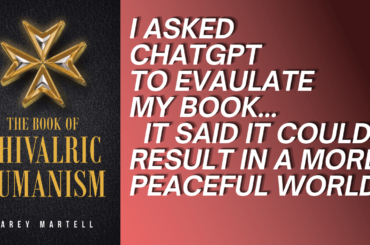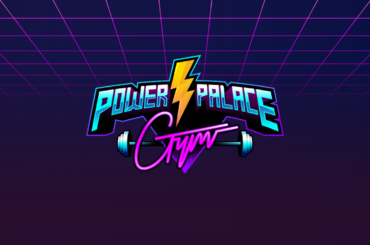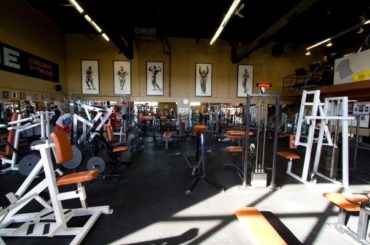I was recently asked to explain what my background in web television is, and why I’m so passionate about building Martell TV as a next generation TV Station platform. So in this post I’ll write a summarized bio of my life as a mildly popular YouTuber.
There is a lot of press out there about how hundreds of people have built careers and fortunes from YouTube. Almost everyone has heard of creators like PewDiePie, smosh, Annoying Orange, RayWilliamJohnson, The Angry Video Game Nerd, iJustine, The Guild and so on. What people don’t hear about is how these famous creators represent less than 1% of all the content on YouTube. I would honestly be surprised if they represented .002% of the content. I want to talk about my experience, because I think it’s a more realistic expectation of how things work for YouTube creators.
Some quick facts about me:
- I’ve been watching YouTube pretty much since it came out, but I created my first YouTube account in 2006. I’ve produced a web series, The RPG Fanatic, since 2009. If I combined all the views from my first and second channel, my personal film work has received around 3 million views.
- I am the author of YouTube Video Marketing Strategies, a blog that talks about different ways to build a YouTube audience with no money.
- I am the CEO of a YouTube multichannel network (MCN), Martell Bros. Studios. which is also developing an app for web series watching. The videos in my network have had over 3.2 million views (note that my personal work has only given 600,000 views to the network).
- I’m pretty much an expert in all things YouTube. I know everything from how to manage your Content ID claims to how to navigate through the confusing maze that is the YouTube Product forums. I’m a member of a private YouTube Partner Google Group that is managed directly by YouTube employees. I have actually been inside YouTube HQ in San Bruno (San Francisco), California and met YouTube employees in person.
- I have survived click-bombings, cyber stalking and 4-chan invasions to my YouTube channels.
So maybe I’m not precisely the 99%; there’s around 1,000 Youtube CMS accounts in circulation and not everyone can say they run a MCN. A person like me probably represents the 10% or something. Whatever. I still believe I have more in common with the average YouTube web series creator than someone like PewDiePie and Felicia Day does. Not that I have anything against the .002% of creators who have huge success with YouTube (I actually like a lot of their shows) but there are many other creators out there who produce content as good as or even better than the well-known folks do– and yet the small guys don’t find success.
Enough of my griping. Let’s go through the years I’ve been a YouTuber:
2006
I will be honest about this: I created my first YouTube account after watching the very first Angry Video Game Nerd (then called The Angry Nintendo Nerd) videos. This was about a month after James Rolfe (creator of AVGN) made his debut, and I’m pretty sure the reason I finally made an account was to comment on his videos.
My first video uploads were a series of horribly produced essays about what videogames teach children along with some boss battles from videogames like Final Fantasy and Xenogears. These were literally the first videos I ever produced, and I made them in Windows Movie Maker on my laptop. I had no intention of becoming a famous YouTuber or making any money. I was doing this out of boredom. My focus at the time was working on an indie MMORPG project called Realms of Earth; in Jan ’07 I uploaded a demo of how the game engine was coming.
It was not until the team fell apart later that month (the lead programmer suddenly lost all motivation) that I began looking at YouTube as something I might want to pursue professionally.
2007
After the project fell apart I focused more on video production. I taught myself to edit and do effects through a combination of video tutorials and hard knocks. I even sold my car to buy a Canon GL2, which at the time was the best prosumer camera on the market. My most notable video produced during this time was a Ronald McDonald prank and some special effects tests. I invested into a copy of Sony Vegas and FX Effect software and taught myself how to edit.
Here is one of the videos I shot, edited and did the effects for during this time.
2008
In 2008 I moved to Ann Arbor, MI to be with my then girlfriend, and enrolled into the video production course at Washtenaw Community College. Originally I wanted to study computer programming because I knew it’d be more marketable, but my math entrance scores were so low that the college refused to allow me to study Intro to Visual Basic. I decided to apply for the film program but the 101 courses were already filled. The only class available was Documentary Film-making and I managed to get into the class by locating the professor and pleading with him to let me enroll without having taken any of the pre-requisites. It helped that I owned a Canon GL2 and demonstrated to him that I knew how to operate it; the college also used Canon GL2s, and my previous video production work convinced him that I was at the same level as the other advanced students in the class. Like in a lot of things in life, I bullshitted my way into film school through persistence and diplomacy. I was the only student in the advanced classes who had never taken any of the introductory courses for beginners yet I consistently had my project pitches accepted during class votes.
These are the favorite of my film-school projects: a documentary about cosplaying, and a presentation on how I did the digital effects in a movie trailer.
2009-2010
In 2009 I made my way back down to Texas again; my girlfriend and I had long since broken up. I lived in San Antonio and decided to start producing a show about roleplaying videogames. I spent a lot of time coming up with names until settling on The RPG Fanatic. As each episode was produced, I refined my style more. I believe I introduced the Student Sword character in the third episode after realizing I needed someone to bounce dialogue off, and to make my show unique among a sea of angry game reviewers.
Unfortunately, YouTube made it difficult for me to start the show the best possible way; I had created youtube.com/therpgfanatic and uploaded the first episodes there, but YouTube Partner staff refused to allow me to monetize my videos; they told me I didn’t have enough subscribers or views on the channel to Partner it. Even when I explained I already had a Partner channel ( jfreedan ) and wanted the new channel to better brand and SEO my show, they just refused to let me monetize the videos. I was forced to upload the first season of The RPG Fanatic show to the jfreedan account. While producing the show I was approached by Oscar, the owner of the site Original Gamer. He also lived in San Antonio and thought my content had potential. I became a game journalist through his site, and started attending events with press passes. I even received advance copies of games to review from publishers.
To my surprise, even some of the people at anime and game conventions I attended as press recognized me from my YouTube channel.
I also attempted to raise Kickstarter money for an original web show, Deathfist Ninja GKaiser. We didn’t raise the $10,000 money we needed for production, but I tried to do it anyway with just $1,000. It turned out to not be enough money, and I would invest several thousand more until things fell apart; the cast and crew didn’t stay committed, and I put a huge financial strain on myself.
Some of the videos I produced during this time:
2011
After working with the Original Gamer guys for a long time it became apparent to me that marketing was lacking. YouTube kept rolling out new changes to the search engine algorithms, making my videos massively drop in monthly views.
The game changed to require creators to constantly pump out “fresh” content, which the search algorithm favored, and diminished the value of having a large back library. This is the exact opposite of how the TV industry normally works; you’re supposed to work hard to build a big library of quality content, and then live off the residuals of that content. Instead YouTube forces successful creators to constantly upload video after video in order to stay in the green. The average successful YouTuber makes enough to pay his bills, but he has to endlessly hustle and basically has no free time for anything but cranking out videos.
I realized I needed more reach and that my show was just too niche to stand alone on its own merits. The RPG Fanatic Show needed to be part of a larger content offering; it’d work best as a segment with several other shows. I became a contributor to GotGame but soon discovered none of the creators were required to collaborate, and therefore did not. Before the year was over I left the site and signed a contract with the network Machinima because they could allow me to monetize The RPG Fanatic channel. I was excited about that because I really wanted to stop using the jfreedan channel.
2012
Being with Machinima was not the best experience. Rather than promote my actual channel, their employees insisted I upload my videos to the Realm YouTube channel that Machinima owned; they explained that by including a link to my personal channel in the description section of the videos uploaded to Realm, people would click on that link and then subscribe to my channel.
Unfortunately the Realm channel was primarily followed by fans of Minecraft and Skyrim, and not many cared about the retro games I tended to focus on. I was added to the Facebook group, but quickly learned it was largely dominated by immature teenagers who thread crapped anyone who made videos they personally weren’t interested in. The network employees did nothing to change this culture, and what little rules existed to ensure people didn’t fight were never enforced. The community was simply not conductive to creative collaborations, which primarily occurred in user-ran Skype groups that only a fraction of the members belonged to.
Before the year was up, I would end my contract with Machinima. It became painfully obvious the company was recruiting channels en masse without any quality assurance, or any intent to promote the creators. What they wanted was for us to produce thousands of videos a month to upload to their channels. Machinima did nothing to help me with my channel; I received not even so much as a single plug on their social media profiles.
When I ended my contract with Machinima, two of their employees tried to talk me into staying over Skype. They said they realized things needed to improve and would do better, if I’d only sign a new contract. At the time Machinima was going through a scandal where they had folks under contracts in perpetuity, which weren’t enforceable in California. They wanted me to sign a new contract with a specific number of years assigned. But Machinima had broken its word to me in the past; they had a massive following on Facebook but had refused to even plug my channel once. I was not going to sign unless they demonstrated they would help me, which they wouldn’t do unless I signed a new contract. So I did not.
In August I formed a network with fellow creator theycallmehydro, and in September I attended the YouTube Partner meetup held at their San Bruno offices.
In November I started designing the beginnings of what would become the Martell TV app. I still remember the exact moment everything clicked together; I was sitting at the long Campfire table at Tech Ranch Austin, and was trying to figure out how to assemble all the existing videos in our network into a channel guide. I wanted a system I would personally be able to use, so I designed the episode container system on the white board, and then made a copy on a piece of paper. From that simple sheet I produced crude wire-frames, which I would later pass to the development team for refinement into the app it is today.
Before the year was up the Martell Brothers Studios multichannel network (MCN) would have over 90 channels. Everything seemed to be going well, and then disaster struck.
2013
In January YouTube opened up the Partner program to all comers; anyone could become a Partner without becoming approved by a YouTube employee or an MCN. This resulted in my channel recruitment efforts practically grinding to a halt; in order for an already Partnered channel to join a network, a YouTube employee has to make the transfer. Martell Bros. had been focusing on recruiting small channels with good content, but that didn’t have the viewership to qualify for a Partnership on their own. But now they could all add themselves to the Partner program without needing an MCN like us.
For a few months YouTube staff did the transfers, but then I was notified YouTube was changing its priorities and we were too small of a partner to warrant any “special attention”. Basically, YouTube changed the game and Martell Bros. was not allowed to grow the same way that other MCNs had.
I next attempted to recruit several of my friends by allowing them to make brand new YouTube channels in our network, and promised them huge increases in the revenue split % they had with their existing networks. Several of them agreed to join us at the end of their contracts, but ultimately none of them did. Instead they joined other networks that were more established, and whose staff promised to promote their channels on the networks social media profiles.
This lack of loyalty threw a major monkey wrench into the initial plans I had for the network. Had those channels joined us, we’d have had millions of monthly views. With notable talent under our belt, I would have found it easier to raise a seed investment, which would have made it easier to build the Martell TV app.
I spent the majority of 2013 pitching to investors and trying to sell the current build of the app, but ran into two walls.
- Even with 3.1 million network views and over 60,000 channel subscribers, the angels investors in Austin just didn’t understand the value of what we do. I’ve yet to meet a single member of groups like CTAN that even knew there was original web series on YouTube. I’ve actually had some of these guys try to debate the feasibility of making money on YouTube from ad revenue, like it’s some kind of concept that people (ourselves included) aren’t already doing.
- Of the many professional film-makers in Austin I’ve spoken with, the majority were focused on producing commercials and sizzle reels, not on original web content. And the people in Austin trying to make original content were not the hugely successful creators like in LA (there are successful people here, like Rooster Teeth, but none of them would reply to my emails, even with introductions from the Texas Film Commission staff).
To fix the latter problem we started the Austin YouTube Creator meetup group in July, but it will take a lot of time to create a community like in LA. Most of the Austin film-makers who produce original web content are allergic to the business side of the business, and just want to focus on the creative aspects. I’ve met a lot of “producers” who really should be calling themselves screen-writers, directors or actors.
Conclusion
I’ve summarized several years of my life here, but this is basically the road I’ve taken to get to where I am today.
Throughout the years one truth has been consistent: my growth has been hampered by lack of money to fully execute my ideas. I have always had to cut out 90% of my vision from the final product I upload to my YouTube account.
If I had anything resembling a budget I could include at least 60% of my vision in the videos I create.
Worse, I’ve actually lost quite a few friendships since starting down this path. Several of my former friends who also were YouTube creator friends did not support my network like they originally claimed they would. I strive hard to keep my word to people, and when I realize I haven’t kept it I will be the first to admit I’ve made a mistake and do my best to rectify the situation. So I cannot stand others who so easily make excuses for why they should be allowed to break their word.
However, the flip side of this is if things had worked out perfectly I would never have tried to join an existing network like Machinima and seen what needed improvement within the model. I also wouldn’t have started my own network or dreamed up the Martell TV app.
In a way, the hard failures on my dreams have been good because they have forced me to dare to grasp for bigger dreams.
I expect 2014 to be the year I finally get things right, and I believe this trip to LA will be a good way to cap off the year and begin things anew. I have plans to spin The RPG Fanatic Show into a new show that can bring more creators in as hosts, and I want to relaunch the Deathfist Ninja GKaiser project.



